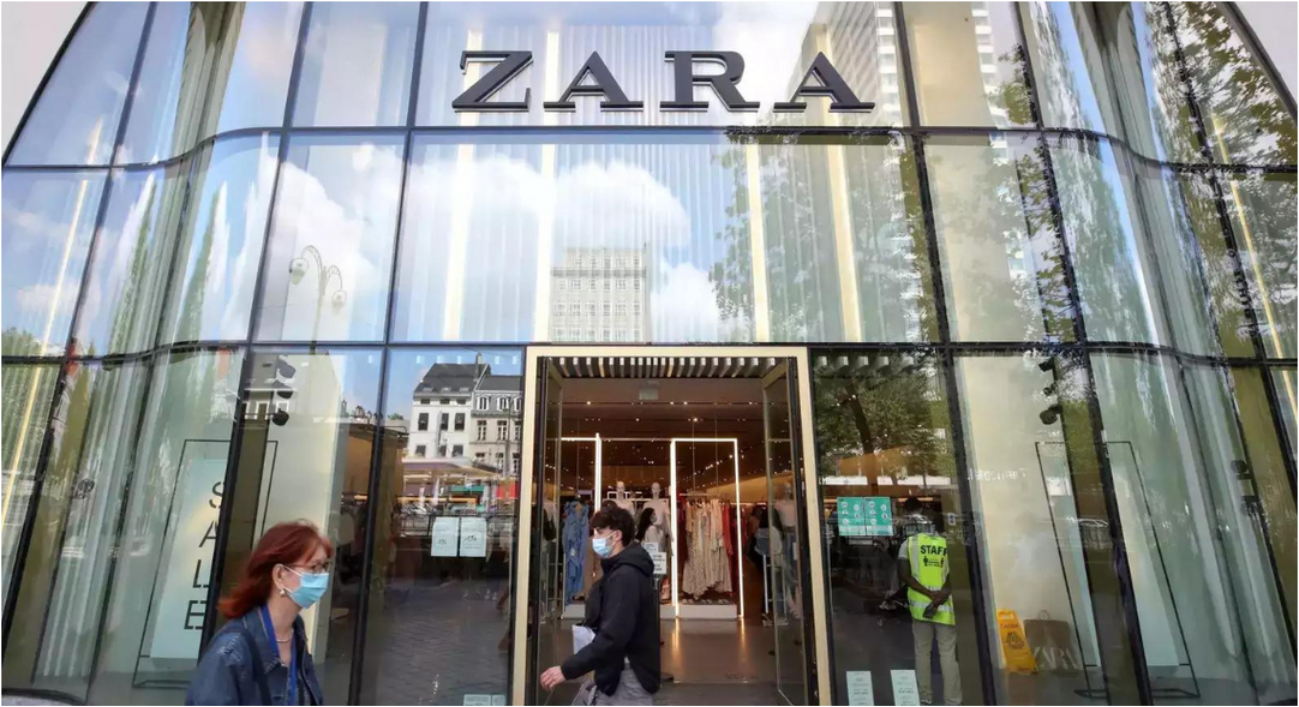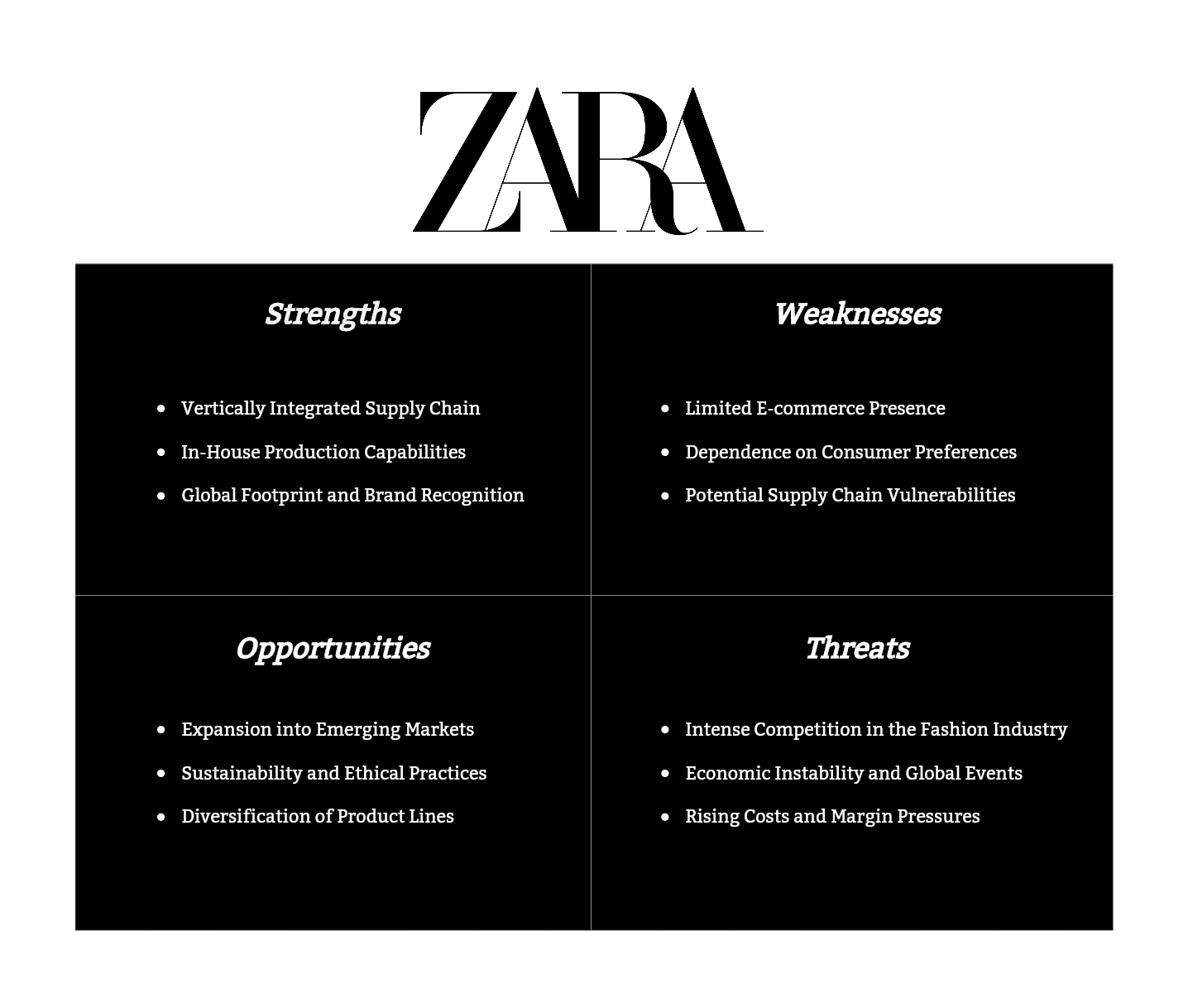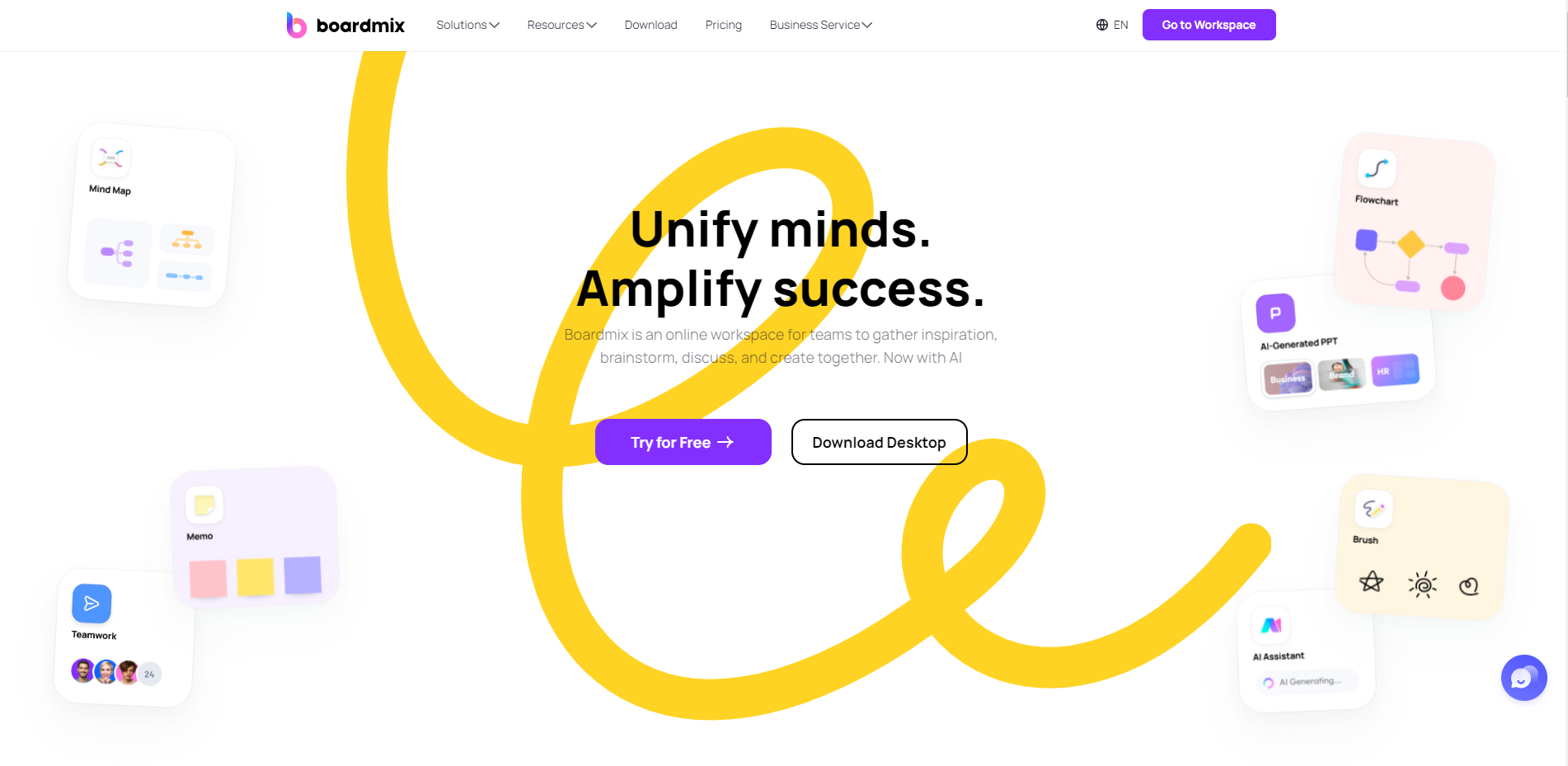Step into the fast-paced world of fashion with our in-depth exploration of ZARA's dynamic landscape. In this detailed guide, we unveil the strengths, weaknesses, opportunities, and threats that define ZARA's position in the industry. From its innovative supply chain strategies to its impact on global fashion trends, we leave no stone unturned. Join us on a journey through the intricacies of this iconic brand, and gain fresh insights into the factors driving ZARA's unparalleled success.

What Is the SWOT Analysis
The SWOT analysis stands as an invaluable compass for companies navigating competitive landscapes. This method is a holistic examination of a company's internal strengths and weaknesses, juxtaposed against external opportunities and threats in the market. By dissecting these critical facets, businesses gain a panoramic view of their position, enabling them to leverage advantages, address vulnerabilities, seize emerging prospects, and fortify against potential challenges. SWOT analysis, a cornerstone of strategic decision-making, empowers companies to chart their course towards sustainable growth and market resilience.

An Overview of ZARA Company
ZARA, a flagship brand of the Spanish multinational company Inditex, has emerged as a global icon in the fashion industry. Founded in 1974 by Amancio Ortega and Rosalía Mera, ZARA is renowned for its agile and trend-sensitive approach to fashion. The company has perfected the art of "fast fashion," delivering on-trend clothing and accessories to consumers at unprecedented speeds. With a vertically integrated supply chain, ZARA controls every aspect of its production process, allowing it to swiftly respond to changing consumer preferences. This business model has propelled ZARA to the forefront of the fashion world, with a vast global presence spanning numerous countries. Known for its high-quality and affordable clothing lines, ZARA has become a household name, captivating fashion-conscious individuals worldwide.

ZARA SWOT Analysis
Here’s the detailed SWOT analysis of ZARA company:

Strengths of ZARA
- ZARA's Vertically Integrated Supply Chain: One of ZARA's standout strengths is its vertically integrated supply chain. Unlike many competitors, ZARA controls nearly every aspect of its production process in-house, from design and manufacturing to distribution and logistics. This end-to-end control allows ZARA to respond swiftly to changing market trends and consumer demands.
- In-House Production Capabilities: ZARAoperates an extensive network of production facilities, giving the company unparalleled flexibility and speed in bringing new designs to market. This agility is a significant competitive advantage, as it allows ZARA to produce small batches of products and quickly replenish best-selling items.
- Global Footprint and Brand Recognition: ZARA boasts a formidable global presence, with stores in over 90 countries. This expansive reach not only provides access to diverse consumer markets but also solidifies ZARA's position as a leading player in the fashion industry. The brand's recognition and reputation for quality and style further bolster its competitive edge.
Weaknesses of ZARA
- Limited E-commerce Presence: While ZARAhas made significant strides in bolstering its online retail platform, it still lags behind some competitors in terms of e-commerce capabilities. Improving the online shopping experience and expanding digital channels could help ZARA tap into a wider customer base and enhance customer loyalty.
- Dependence on Consumer Preferences: ZARA's business model hinges on accurately predicting and responding to shifting consumer preferences. Any misjudgment in fashion trends can lead to excess inventory or missed sales opportunities. Striking the right balance between forecasting and flexibility is essential.
- Potential Supply Chain Vulnerabilities: Despite its impressive supply chain capabilities, ZARA is not immune to potential disruptions. Events such as natural disasters, political instability, or supply chain bottlenecks can impact production timelines and lead to inventory challenges.
Opportunities of ZARA
- Expansion into Emerging Markets: ZARA has the opportunity to tap into rapidly growing markets, particularly in Asia and Africa, where rising middle-class populations have increasing purchasing power. Strategic expansion efforts in these regions could open up new revenue streams and solidify ZARA's global presence.
- Sustainability and Ethical Practices: Embracing sustainability and ethical practices in production and sourcing materials aligns with evolving consumer values. By prioritizing eco-friendly materials, responsible sourcing, and ethical labor practices, ZARA can appeal to a socially conscious consumer base and differentiate itself in the market.
- Diversification of Product Lines: Exploring new product categories, such as accessories, beauty, or home goods, offers ZARAthe opportunity to diversify its product offerings and capture additional market share. This diversification can also deepen customer engagement and loyalty.
Threats of ZARA
- Intense Competition in the Fashion Industry: The fashion industry is fiercely competitive, with a multitude of brands vying for consumer attention. Keeping ahead of rapidly changing trends and consumer preferences requires continuous innovation and agility.
- Economic Instability and Global Events: External factors like economic downturns, geopolitical events, or public health crises can significantly impact consumer spending habits. ZARA, like any other retailer, is vulnerable to these broader economic shifts and must navigate them strategically.
- Rising Costs and Margin Pressures: Fluctuating costs of raw materials, labor, and transportation can impact ZARA's margins. Balancing affordability with quality in the face of cost pressures requires astute financial management and operational efficiency.
SWOT Analysis Template & Tool
Revolutionize your SWOT analysis. Boardmix is your go-to tool for a seamless and comprehensive SWOT analysis experience. With its customizable templates, it streamlines the process, allowing for a focused examination of strengths, weaknesses, opportunities, and threats.

Whether you're working with a team or conducting a solo assessment, Boardmix ensures that every insight is captured and integrated, empowering you to make informed strategic decisions with confidence. Elevate your analysis with Boardmix and unlock new perspectives for your business.
Conclusion
In conclusion, ZARA stands as a formidable force in the fashion industry, driven by its unparalleled strengths in supply chain management and trend-setting designs. However, in SWOT analysis of ZARA company we noticed that it faces challenges, particularly in the realm of e-commerce and potential supply chain vulnerabilities. Opportunities lie in further global expansion and embracing sustainability. Yet, ZARA must navigate intense competition and economic uncertainties. With the right strategies and tools like Boardmix, ZARA is poised to continue its legacy of reshaping the fashion landscape worldwide.








